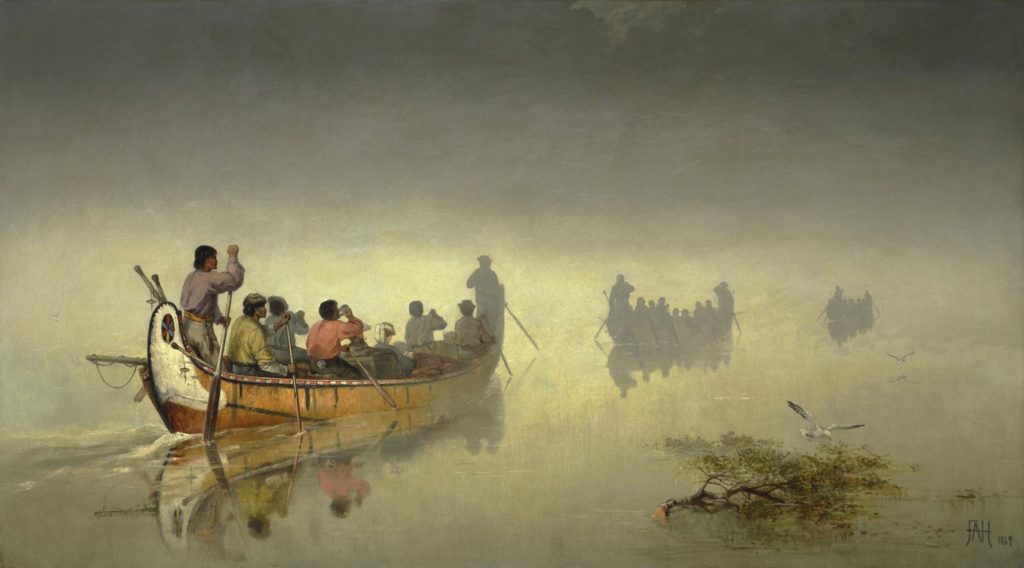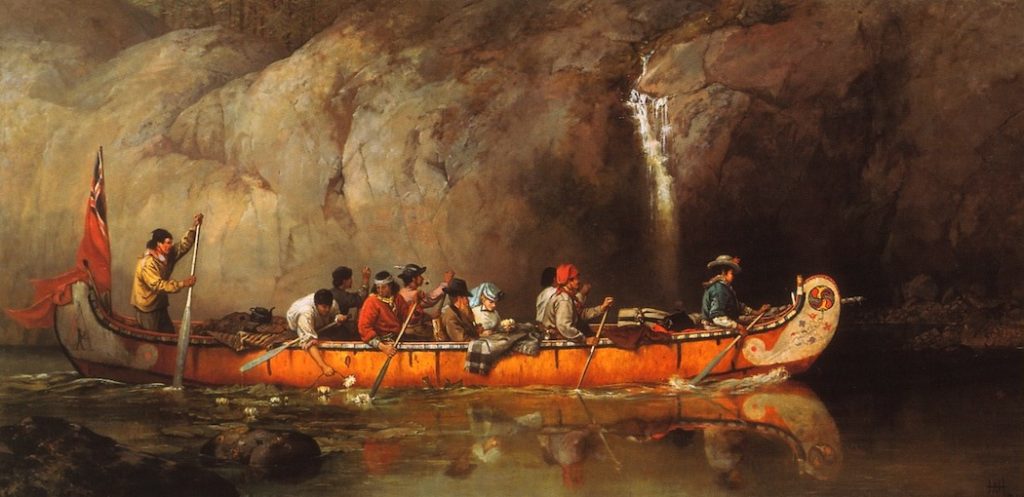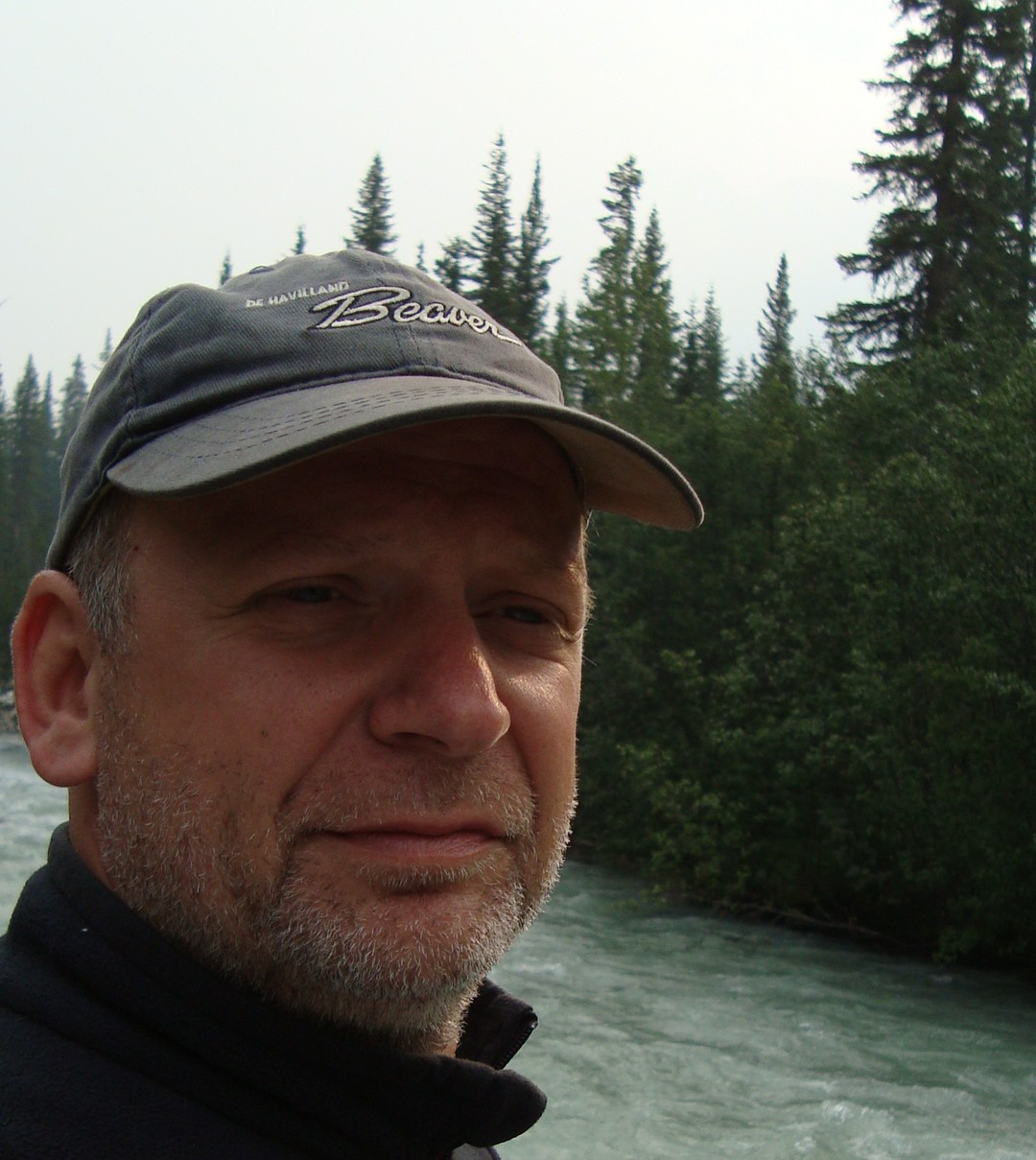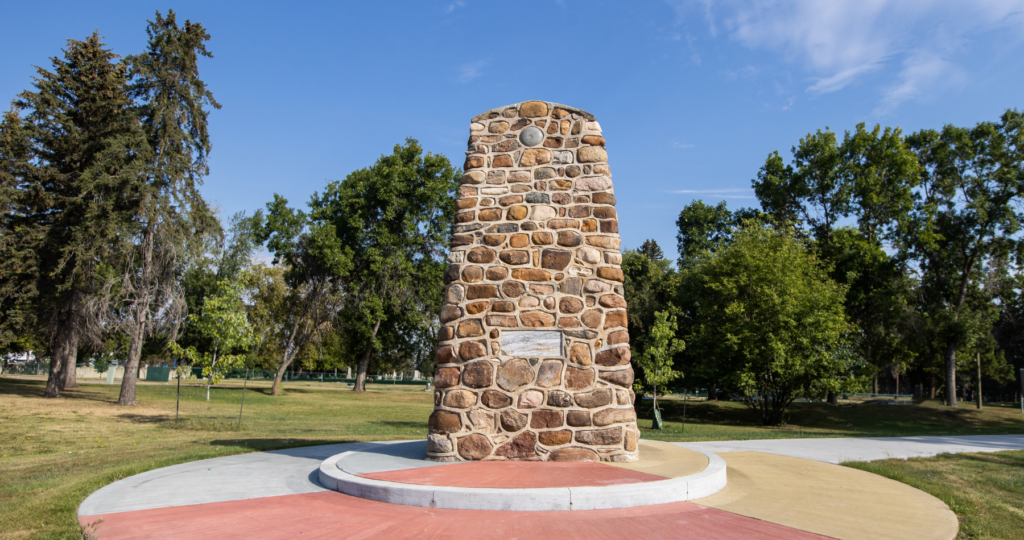Post Category : Archaeotourism Local Archaeology
Voyageurs in the mist
a voyageurs adventure
David Thompson was one of the most prolific 19th century surveyors and an integral piece of Canadian history who voyaged tens of thousands of kilometers on foot and by canoe! Although never having received credit in his lifetime, Thompson is recognized as one of the most influential surveyors of the fur trade. His voyaging experiences, combined with his mathematical and scientific methods, produced near perfect maps of the Canadian landscape.

After a group of friends and I spent over three years conceptualizing and planning ‘The 2008 David Thompson Brigade’, it finally began on May 8th, 2008. Sixteen replica Canot du Nord, or North Canoes, left Rocky Mountain House, Alberta late in the morning to a small community send-off. After sixty-three days of paddling, we arrived in Fort William of Thunder Bay, Ontario to a massive welcome! It was a once in a lifetime trip and one I will never forget… It is one thing to spend your life reading about a particular period, but it is quite another to witness it actually being lived and, of course, living it yourself!
A real chasse-galerie
Our entire group of voyageurs tried to remain as authentic to the period as possible. This included our clothing, tools, and the way we paddled our canoes. Six people in a canoe, 60 strokes of the paddle per minute and swapping sides every minute, for a minimum of 8 hours every day. To keep in time, we learned the traditional voyageur songs in French and/or English. In the isolated areas where our canoes camped apart, It wasn’t uncommon to hear other voyageurs embarking before you the following morning. The mystical sound of voyageur songs carries across the crisp, early morning air long before you see the canoes appear as shadows through the mist. It is so very reminiscent of the voyageur paintings created by Frances Anne Hopkins nearly 200 years earlier.

As our canoes made their way through the boundary waterways (between Ontario and Minnesota), we knew we were travelling through history. On East Bend Island in Lac la Croix, we camped on the leeward shore that was witness to the French coureur des bois and other voyageurs who had camped there for hundreds of years. You could almost imagine their canoes and hear their songs as they approached!
Voyageur Ghosts of the North
One particular morning, not long after the brigade had proceeded up the North West Company’s Kaministiquia Route, we entered Sturgeon Lake where we camped for the night. The following morning, the silence was broken by voyageur song. The lake was laden with a heavy mist, and no one could see who was singing. Admittedly, the perfect melody and French pronunciation of the lyrics sent a chill up my spine, as the song was not sang by us during the trip… indeed, the song was practiced a bit before embarking on our journey. Nonetheless we are not to the caliber of the shrouded singer.

Later, we gathered by the Great Hall at Fort William and shared stories of the trip over the course of an evening. Inevitably, conversation about our evening on Sturgeon Lake arose. We all remarked on how stunning the first canoe voyageur’s song was the following morning. Eager to know, one of the paddler’s asked “who was in the canoe?” No one owned up, but I am certain that our canoes were the only boats on the lake that night. Someone commented that the French was too perfect and that they didn’t think it was anyone from our brigade. So, who was it then? Of course, the idea of ghosts crossed our minds. Specifically, voyageur ghosts who still traversed the waterways they once paddled. Perhaps, even those who had drowned at one of the many falls or rapids along this historic route.
The question was asked once again, but there was no answer. After a long pause, we changed the subject.

Andreas Korsos
GIS Specialist
Andreas Korsos is the Geographic Information System (GIS) Specialist for Ember Archaeology. He joined the Ember team in 2021 to continue his career and merge his two passions: mapping and the history of western Canada. Not only has Andreas worked in the private sector, but he has also aided several non-profit and government agencies. His extensive knowledge of geographic systems, his industry experience and his love of history make him a valuable addition to the Ember team.



